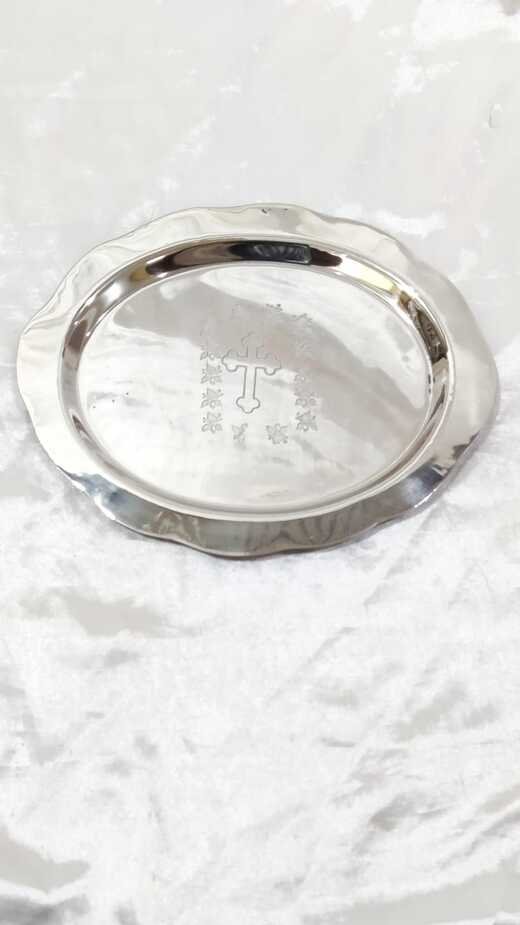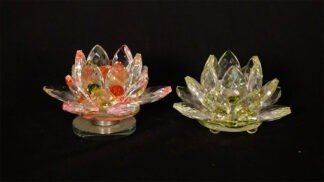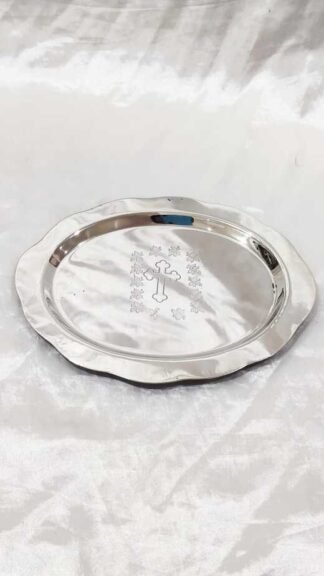Description
- Communion plates, also known as patens, are liturgical vessels used in Christian religious ceremonies, particularly during the Eucharist or Holy Communion. These plates serve to hold the bread or communion wafers that are consecrated and then distributed to the congregation. Here are some key points about communion plates:
- 1. *Material*: Communion plates are traditionally made of brass, pewter, or other durable materials, sometimes with a gold or silver plating.
- 2. *Design*: Typically, communion plates are simple and unadorned to emphasize their function over form. However, some may feature religious symbols or inscriptions, such as a cross or the Greek letters “IHS,” representing the name of Jesus.
- 3. *Size and Shape*: They are generally flat or slightly concave to securely hold the bread or wafers. The size can vary, but they are usually designed to be easily handled by the officiant or server during the communion service.
- 4. *Usage*: During the service, the communion plate is used to present the bread or wafers to the congregation. The officiant, often a priest or pastor, will consecrate the bread, breaking it as a symbol of Christ’s body, and then distribute it to the communicants.
- 5. *Significance*: The communion plate plays a crucial role in the sacrament of the Eucharist, which is a central rite in many Christian denominations. It represents the body of Christ and is treated with great reverence and respect during the ceremony.
- 6. *Variations*: Different Christian traditions may have variations in the design and use of communion plates. For example, in some Protestant denominations, the plate might be passed among the congregation, while in Catholic and Orthodox churches, it is typically used by the clergy.Overall, communion plates are essential ceremonial objects that facilitate the observance of one of Christianity’s most sacred rituals.








Lata –
Please I would like to know the size of the communion plate.